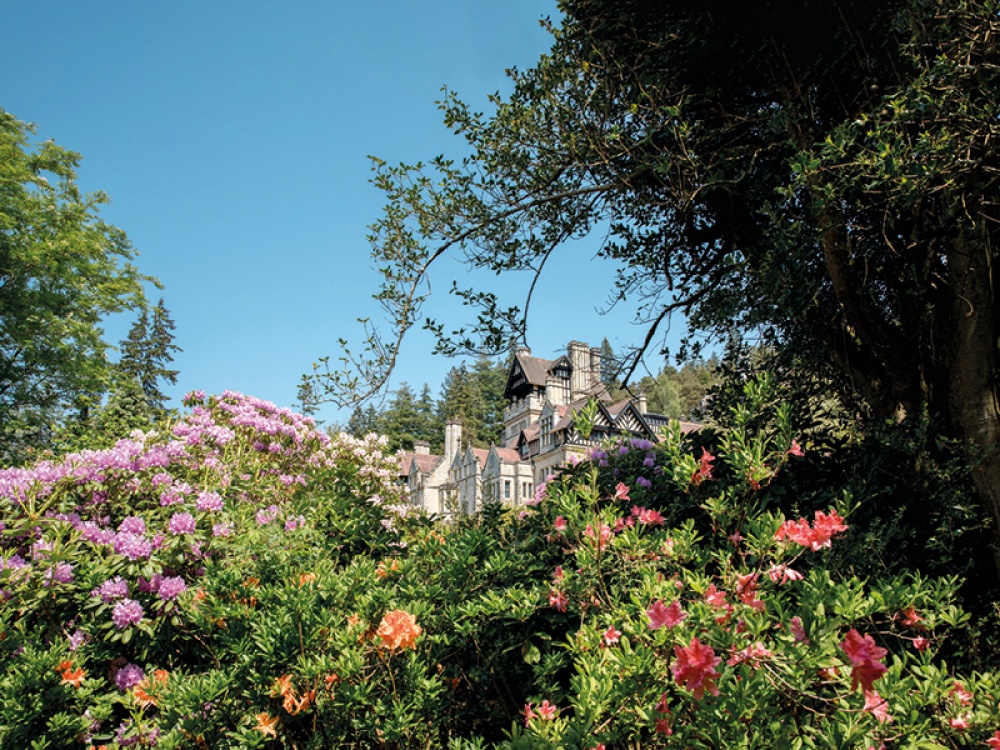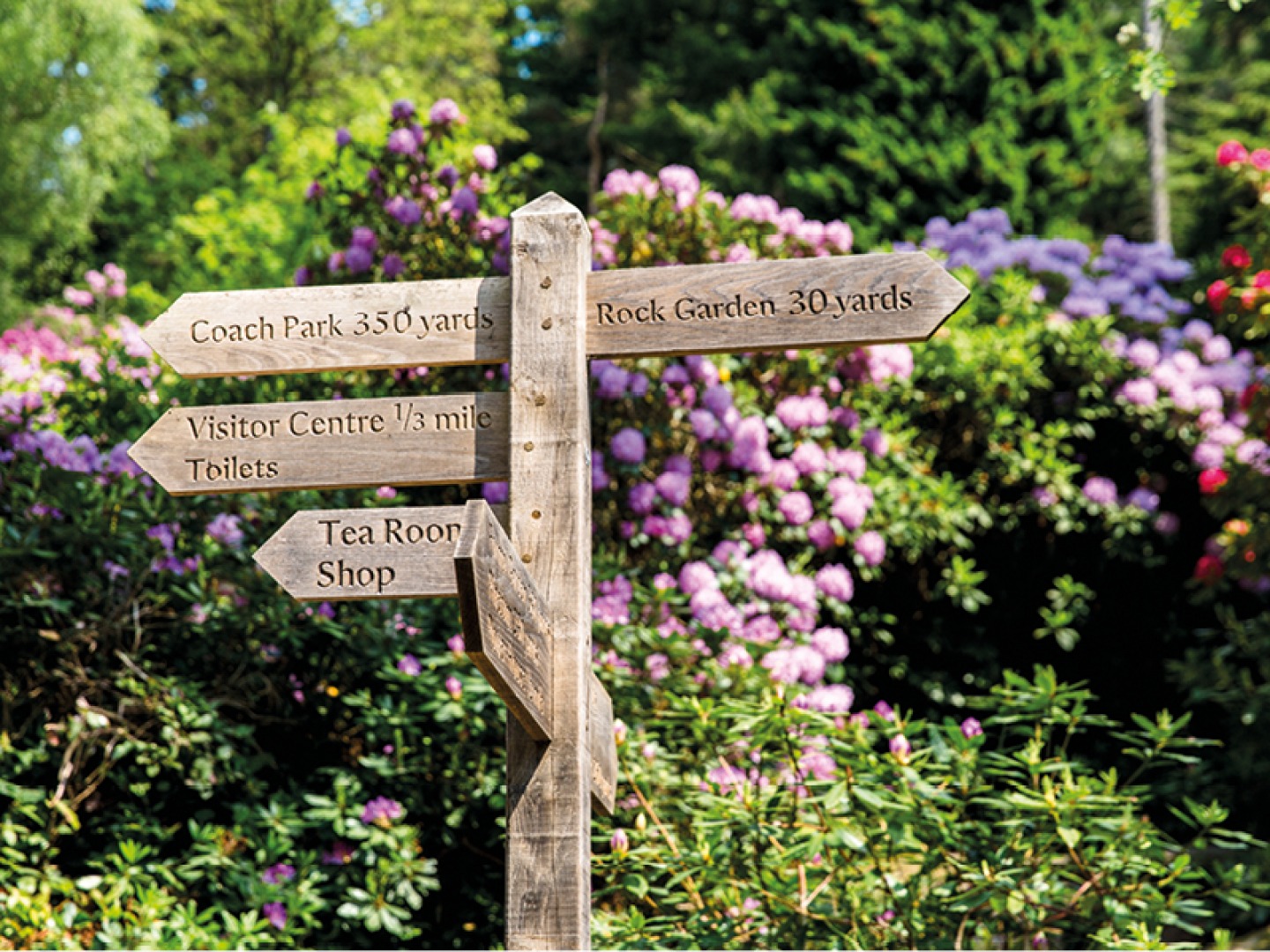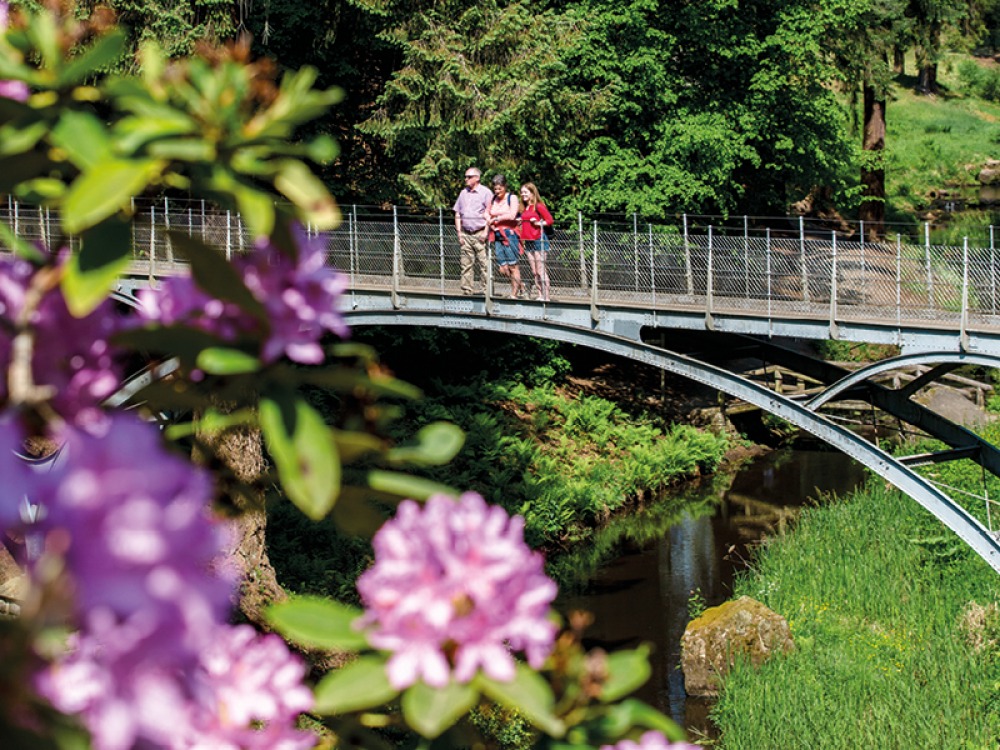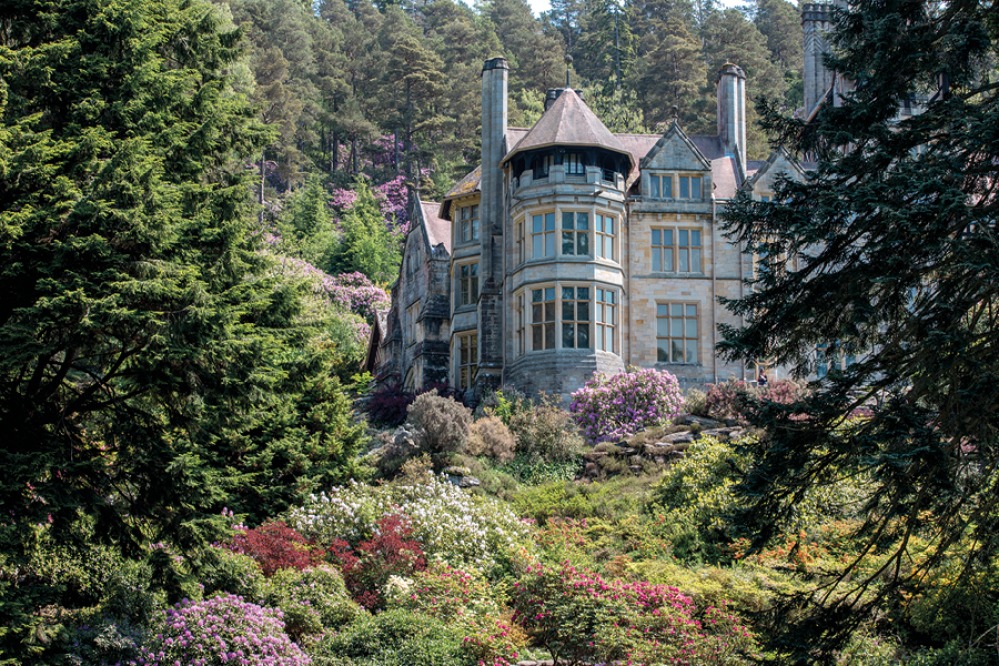Don't Miss the Rhododendrons in Bloom at Cragside

Witness 1,000 acres of flowers blooming


This National Trust property is a pocket of engineered paradise nestled in the Northumberland hills and unlike anywhere else in the county. The terms engineering and gardens may not usually go together, but Cragside is a pioneering place where beauty and function were combined to create a fantasy mountain landscape.
Cragside’s creators, William and Margaret Armstrong, landscaped the grounds on an industrial scale. They planted millions of trees, created engineered lakes to harness the power of water and manipulated waterways to create a beautiful series of waterfalls. They mined sandstone from across the grounds to construct a Rock Garden and build the House and covered the hillsides in rhododendrons, which Cragside is now famous for.
There are flowers everywhere you look, but one of the best places to see them is the Rock Garden. For that picture-perfect view and amazing selfie spot with friends and family, find your way to the Archimedes Screw and enjoy a peaceful stroll along the path that hugs the burn in the valley. You will be shaded by the trees and can enjoy the calming sounds of the water trickling over the cascades. After a short while, you will soon see the House come into view, sitting at the top of the crag.

It's well worth the hike up the stone steps to the Iron Bridge to view the vibrant display. The House looks like it’s sat at the top of a patchwork quilt of colour with vibrant oranges and yellow, calming mauves, and hot pinks. From here you can meander up the stone paths that weave around the House and get up close to some of the unique varieties.
From the visitor centre, as you look up between the trees, you will see what looks like a sea of mauve flowers stretching up the hillside as far as the eye can see.
On the top of the estate is Nelly’s Moss, a pair of engineered lakes that were created to be the vital water stores for William Armstrong’s hydroelectricity creation. Here you will witness the banksides of the lakes covered in purple and pink flowers. The walk around the lakes is a little over a mile and reasonably level, making it a great place to stretch your legs.
You can make your walk a little longer by tagging on the Inspiration Trail which starts next to Crozier car park, not far from the banks of Nelly’s Moss. This walk takes you to Slipper Lake, a small pond of water nestled in the hillside. At this time of year, you may spot some early-emerging dragonflies skimming the top of the water. From here, the walk leads you to a stone-stepped path that zig-zags up the crag. As you traverse the hillside, keep a look out for quote by William Armstrong, carved into the rock. Once at the top you will be greeted by spectacular views of the Northumberland countryside with sights of flowers cascading down the hillside in front of you.
To get a sense of the size and scale of Cragside, take your car around the Carriage Drive. This 6-mile circular route was originally used by Margaret Armstrong to drive horses. Today it’s a great way to explore the grounds on four wheels. It starts with a scenic drive through the archways of the House. Among the rhododendrons you will see giant boulders balanced on the hillside, tumbling waterfalls and Blackburn boathouse on Cragside’s driest lake. There are plenty of places to stop for photos and explore a little further.
While you’re visiting, it’s the perfect excuse to do a little exploring around some of the other parts of the grounds. As spring continues, the Formal Garden is starting to come alive with colour. Find a bench and watch the bees and butterflies flying between the flowers. In the ferneries, on the top terrace, the ferns are starting to come to leaf from the nooks and crannies of this small rock garden.

When landscaping the grounds, the Armstrongs were looking to the future. The Pinetum is an ornamental forest filled with non-native coniferous trees. Originally planted as saplings, the trees were picked for their enormous size once at maturity and at more than 60 metres tall, some are the tallest of their kind in the country. On a sunny day light streams between the trees, casting dancing shadows on the woodland floor.
Cutting through the rock between the Pinetum and the Powerhouse is the Gorge. This route had always been a waterway for the Debdon Burn, but the Armstrongs wanted to make it grander and blasted the route to create a more impressive ravine that cuts through the rock. Here, you can walk down the carved stone steps and cross a wooden bridge, you will witness water tumbling over cascades into the River Coquet below.
It wouldn’t be a visit to Cragside without experiencing Britain’s original smart home. William and Margaret Armstrong were inspired by nature and the changing seasons in their interiors. On the William Morris wallpapers, you’ll see designs with fruit, flowers and birds, while the stained-glass casts replicas of its sunflower designs on to the walls as the sun moves by during the day. The red lampshades in the Library have intricately detailed iron work with roses and leaves, while the wooden panelling in the Dining Room is filled with carved woodland animals, leaves and flowers as seen around the grounds.
Cragside rhododendron season is a highlight in the North East gardens calendar. Keep your eyed glued to their social media pages for updates and announcements on Facebook, X (formerly Twitter) and Instagram using @NTcragside as they are predicting an earlier bloom this year. Cragside is so big, you can’t experience everything in a day, but it’s the perfect excuse to come back again and discover somewhere new.
Cragside is currently open every day from 10am–5pm (last entry 4pm). Adults £23, children £11.50, family entry £57.50. National Trust members and under 5s are free. Car parking is free. You can also take a bus to Cragside. The Arriva X14 has stops between Newcastle Haymarket, Morpeth and Cragside. The Liberty 471 between operates at stops between Thropton and Alnwick. Both buses are £2 per single journey and stop at the main entrance. Plan your visit at nationaltrust.org.uk/cragside.











